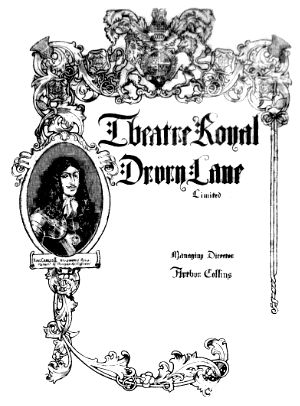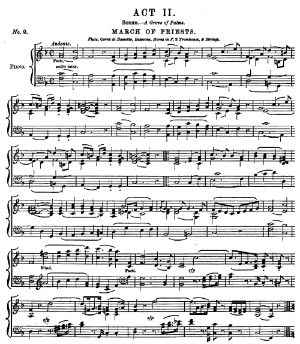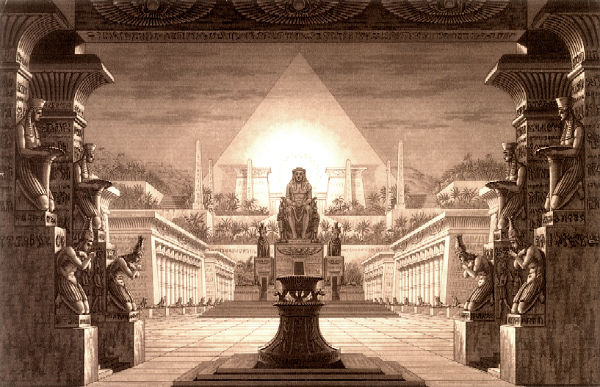
Having settled his guests in their seats, Faull stepped up to the curtain and flung it aside. A replica, or nearly so, of the Drury Lane presentation of the temple scene in the “Magic Flute” was then exposed to view...
... A murmur of surprise passed through the audience as, without previous warning, the beautiful and solemn strains of Mozart’s “Temple” music pulsated through the air. The expectation of every one was raised, while, beneath her pallor and composure, it could be seen that Mrs. Trent was deeply moved. It was evident that aesthetically she was by far the most important person present.
— A Voyage to Arcturus, Chapter 1
David Lindsay refers to the “Temple scene” and its music from Mozart’s opera The Magic Flute three times in the first chapter of A Voyage to Arcturus, and though it’s clearly presented as part of the unwonted frippery surrounding this drawing room séance, it’s hard to believe Lindsay, to whom music was so important, picked this piece because it typified for him what the medium Backhouse calls the “coarse, clumsy suspicion of some of the witnesses, the frivolous aestheticism of others”.[1] The language Lindsay uses — “beautiful and solemn” — implies the opposite. Lindsay in fact wrote about the same piece in his “Sketch Notes for a New System of Philosophy”, making it clear how much it meant to him:
What words are to Music, individuals are to the Sublime. This is excellently shown in the Temple scene of the Magic Flute. The massive gloom of the interior, the gigantic statue silhouetted against the gleaming sky, Mozart’s hymn; contrasted with the declamation of the High Priest, and the double row of white-robed priests who assist him. Both words and men appear absolutely insignificant and meaningless beside the music and the solemn grandeur of the Temple.
— quoted by J B Pick in “A sketch of Lindsay’s Life as Man and Writer”, p. 13
In addition, Lindsay is making reference to a specific production of The Magic Flute — “the Drury Lane presentation” — clearly expecting his readers to know what he is talking about.
So, what was “the Drury Lane presentation”, and what bearing does The Magic Flute have on Lindsay’s novel? In this article I’ll look at Mozart’s final opera, what Lindsay meant by “the Drury Lane presentation”, and give some ideas on how The Magic Flute relates to the story, themes, and form of A Voyage to Arcturus.
Die Zauberflöte

Wolfgang Amadeus Mozart (1756–1791)
portrait drawn in 1789 by Doris Stock
Mozart composed the music to Die Zauberflöte (The Magic Flute) in the spring and summer of 1791, with an interruption near the end to go to Prague and compose a different opera, La Clemenza di Tito, for the coronation of Austrian Emperor Leopold II as King of Bohemia.[2] (Mozart was in desperate need of money at the time, and a royal commission was a better paying gig). He worked on Die Zauberflöte in a “summer house”[3] in the grounds of the Freihaus-Theater auf der Wieden in Vienna, whose director, Emanuel Schikaneder (1751–1812), was an actor, singer, impresario, and long-term friend of the Mozart family, as well as being Die Zauberflöte’s librettist.
The opera’s plot derives from “Lulu, oder die Zauberflöte” (“Lulu, or The Magic Flute”) a fairy tale by Jakob August Liebeskind, which was included in Christoph Martin Wieland’s collection of translated, re-worked, and wholly invented oriental tales, Dschinnistan (published in 1786–1789). But Mozart and Schikaneder’s opera departs from this source in an important way.
As the opera begins, Prince Tamino is being pursued by a giant serpent. He faints from terror, but is saved by three ladies who kill the serpent, then summon their mistress, the Queen of Night. The Queen’s daughter Pamina is being held by the “evil and mighty demon”[4] Sarastro, and she wants Tamino to free her. Entranced by a portrait of the young woman, he agrees, and is given a magical golden flute, which has the ability to pacify all who hear it. He, and his more earthy, comical companion Papageno set off to free Pamina, and it’s at this point Die Zauberflöte heads in a new direction. While in “Lulu”, the evil sorcerer (Dilsengbuin in the original tale) really is an evil sorcerer, and the young woman (Sidi) is duly returned to her mother (Perifirime, a fairy),[5] in Mozart and Schikaneder’s opera Tamino learns that Sarastro is actually a wise and benevolent ruler, head of a priesthood dedicated to serving at the Temples of Wisdom, Reason, and Nature. He’s holding Pamina in the hope of weaning her off her mother’s darkly irrational influence and bringing her to the way of reason. Tamino and Pamina pass through separate initiatory trials whereupon, their worthiness proved, they enter the light-filled Temples together. The Queen of Night, frustrated and impotent, is banished into eternal darkness.
One reason critics have suggested for this departure from the source is that another opera based on “Lulu”, Kaspar de Faggotist, oder die Zauberzither (Kaspar the Bassoonist, or The Magic Zither) had premiered in June,[6] and Schikaneder and Mozart simply wanted to differentiate theirs. But even the above brief plot summary makes it evident that their departure from the source material is very unlikely to be a throwaway decision made simply for commercial reasons. The victory of the light of Reason over the chaotic irrationality of Night is the driving idea behind the Enlightenment, the intellectual and philosophical movement that gripped the West in the 17th, 18th and 19th centuries. Mozart was deeply engaged with Enlightenment ideals, and his music has come to symbolise its belief in the beauty of rational harmony, while his operas increasingly engaged with ideas of social equality (in which non-noble characters could have storylines of equal weight to those of their noble counterparts, for instance), another key Enlightenment idea. With this departure from the source material, Mozart and Schikaneder transformed a rather conventional fairy-tale plot to a story about their era’s emergence from a benighted, irrational past to the light of rationality.
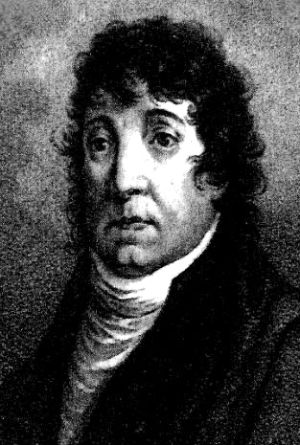
Emanuel Schikaneder (1751–1812)
Both Mozart and Schikaneder were Freemasons, an organisation that sought to embody Enlightenment values, such as the perfectibility of individual moral conscience, and one’s duty to do good for its own sake (rather than for public approbation, hence Masonic Lodges’ secrecy), as well as a belief in rationality and empiricism. Die Zauberflöte has long been accepted as a work infused with Masonic symbolism, and to be an allegory of Masonic initiation rites. (Another important source for Die Zauberflöte is the novel Sethos, histoire ou vie tirée des monuments anecdotes de l’ancien égypte, or The Life of Sethos, Taken from Private Memoirs of the Ancient Egyptians,[7] published anonymously by Abbé Jean Terrasson in 1731, which purports to be a historical document that includes descriptions of ancient Egyptian initiation ceremonies.)
An oft-quoted example of Masonic symbolism in Die Zauberflöte is the prevalence of threes, this being a number integral to Freemasonry, which has three degrees of initiation — Entered Apprentice, Fellow of the Craft, Master Mason — and for whom three symbolises both God and the first complete shape that can be made from straight lines, the triangle (and, hence, that most stable of all stone constructions, the pyramid).[8] In the opera (which starts in, and constantly returns to, the key of E♭, whose signature is three flats, and which opens with three strong chords), three is the number of Ladies who help Tamino at the start, the number of Genii who are assigned to help him in his quest, the number of Temples Sarastro presides over, and the number of questions asked about Tamino before his initiation, which highlight three essential Masonic qualities:
“Is he virtuous? Can he be silent? Is he beneficent?”
— The Magic Flute Act II, Scene 9 (translation MacFarren, p. 83)
Making their opera an enactment of Masonic ideals was no commercial decision, as Freemasonry had been denounced by several popes, and been outlawed by Holy Roman Empress Maria Theresa in 1764 (leading some to think her the origin of the Queen of Night).[9] Even under her more tolerant son, Joseph II, Austrian Masonic lodges were limited in number, and had to pass their membership lists to the police. (And in 1795, Freemasonry was once more declared illegal in Austria.) The general feeling was, any organisation that kept its activities and memberships secret could only have been up to no good.
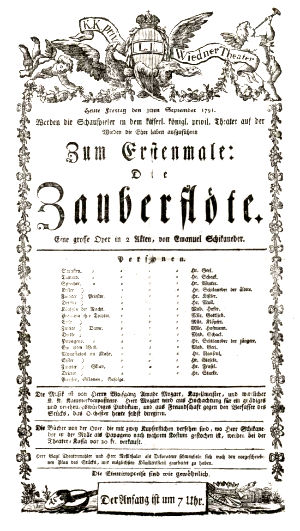
Playbill for the premiere of Die Zauberflöte
But when Die Zauberflöte premiered on 30th September 1791 (with Mozart conducting from the piano, his sister-in-law Josepha Weber Hofer playing the Queen of Night, and Schikaneder as Papageno), it was pretty much an instant success. In little over a year it had received 100 performances (its 100th being given on 23rd November 1792, its 200th on 22nd October 1795).[10]
As well as the quality of Mozart’s music, which has often been cited as being among his best, one reason for the continued success of the opera may be that Die Zauberflöte contains so much variety, and has something for everyone. It is said to include every musical form “from the lied to the chorale to the fugue”[11] (and this musical range is evident in the actual span of its sung notes, from the bass F2 of Sarastro to the high F6 of the Queen of Night). Die Zauberflöte took a popular form, the Singspiel (a Germanic operatic genre which mixed songs with spoken dialogue, and often incorporated farce and comedy) — in particular the Zauberoper or “magical opera” which used fairy-tale and fantasy elements to provide its audience with plenty of flashy scenic effects, “lavish transformation scenes in a fairy world”,[12] and a heart-warming ending — and mixed it with more profound philosophical ideas, enacted symbolically on the stage, turning it into “a serious allegory of human life” (as the music critic and translator of the libretto into English, Edward Joseph Dent, wrote).[13] So, it was an opera that could be enjoyed purely as spectacle, as comedy, as music, and as a symbolic synthesis of humanistic, Enlightenment ideals.
The Austrian audiences of the day may have had particularly patriotic reason to like the opera, because not only was it good, but it was sung in German, in an age when operatic artistry was associated with the Italian language, and German with the lower, more populist Singspiel-like forms.
Sadly, Mozart didn’t get to experience much of this positive reaction. He died on the 5th December 1791, a little over two months after the premiere.

Drury Lane
The first performance of Mozart and Schikaneder’s opera in Britain was in 1811, at the King’s Theatre, London, when it was presented as a benefit for singer Giuseppi Naldi, who played Papageno that night.[14] Opera, at that time, still meant Italian opera, and it was presented not in its original language but as Il Flauto Magico. This version would continue to be the main one presented in England throughout the 19th century. (It was not until Wagner became popular in the 1870s that German-language opera was taken seriously in Britain.)
Of this 1811 performance, the reviewer for The Spectator wrote, “It was a curious scene: neither singers nor audience could understand it.”[15] This would, in large part, remain the general reaction to Mozart’s final opera in the UK for the next century. Critics were perplexed at how to sum up this combination of sublime music and fairy tale plot: “a libretto that is a strange mixture of fooling, fantasy, and fateful insignificance”,[16] one that has “generally been considered to be one of the most absurd specimens of that form of literature in which absurdity is only too often a matter of course”.[17] In 1916, The Times called the opera “as inconsequent as it is beautiful”,[18] while E M Forster dismissed it as a “masonic pantomime”.[19] “Before the Great War,” writes Dominic Fyfe, “[The Magic Flute] was considered to be the dullest, most impossible opera Mozart had written and joined Beethoven’s Fidelio in unpopularity with Victorian and Edwardian audiences.”[20]
1833 saw the first German-language presentation of Die Zauberflöte in the United Kingdom (from a German opera company), seemingly for a single performance, and 1838 saw its first English-language production, this time at the Theatre Royal, Drury Lane.
This theatre, in London’s Covent Garden district, is often referred to simply as “Drury Lane”. Built in 1663, it was rebuilt after a fire in 1674, then again after another fire in 1794, and finally once more in 1812, after yet another a fire. During the latter years of the nineteenth century, when late-19th and early-20th century theatre acquired a taste for extravaganza, it staged some spectacular scenes, including an on-stage train crash and a race featuring a dozen horses galloping on a treadmill. [21] It has been associated with many famous actors, including the actor-manager David Garrick (1717–1779), Edmund Kean (1787–1833), Henry Irving (1838–1905), Ellen Terry (1847–1928), the comedian Dan Leno (1860–1904), and the actor and songwriter Ivor Novello (1893–1951). (After the Second World War, it became known for long runs of musicals, including Miss Saigon, Oklahoma!, The King and I, and The Lord of the Rings: The Musical.)
Il Flauto Magico continued to be performed, off and on, in the UK until 1888, after which Mozart and Schikaneder’s opera was quietly dropped from the British scene for over two decades. It was revived in 1911, for a three-night amateur production at Cambridge University, where biscuit tins were repurposed as gilded helmets, and the soprano playing Pamina had to have her part sung from offstage by Papagena, as she’d lost her voice with a cold.[22] The libretto for this production was translated into English by Edward Joseph Dent (1876–1957), who would later become Professor of Music at Cambridge and a leading British music critic. He helped pave the way for a greater acceptance of The Magic Flute as a serious work. It was, he wrote, “not a silly pantomime with some famous songs for exceptional singers, but a serious allegory of human life like Everyman”,[23] and several reviews of its early-20th century revival cite Dent’s writing on the opera as a means of understanding this serious element. (Another defender was George Bernard Shaw, who wrote that Sarastro’s songs were “the only music yet written that would not sound out of place in the mouth of God”,[24] and that “Die Zauberflöte is the ancestor, not only of the 9th Symphony but of the Wagnerian allegorical music-drama, with personified abstractions instead of individualised characters as dramatis personae.”[25])
Dent’s translation was used by the Carl Rosa Opera Company (founded in 1873), who toured The Magic Flute around Britain in 1913, 1914, 1916, 1917 and 1920. But they weren’t the ones to bring it back to Drury Lane. That was a man whose musical career began when Hans Richter, conductor of the Hallé Orchestra, fell ill in the midst of a series of performances in St Helen’s, Merseyside, and the then-mayor of that town had his own son step in to replace him. The mayor was millionaire pharmaceutical manufacturer Sir Joseph Beecham, and his son was the man Harold C Schonberg called “the first British-born conductor to sweep the world”.[26]
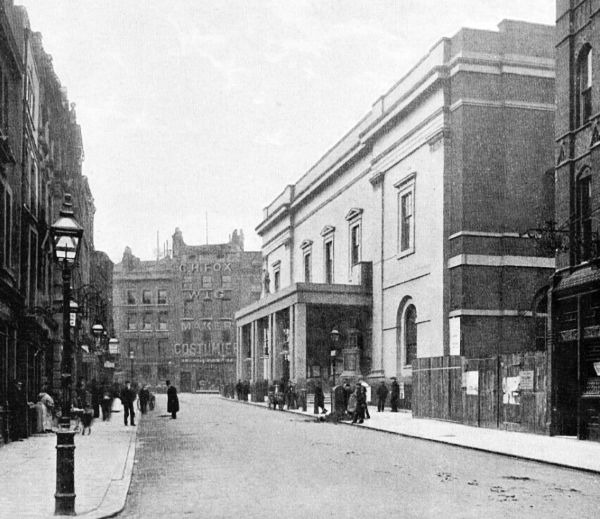
Sir Thomas Beecham
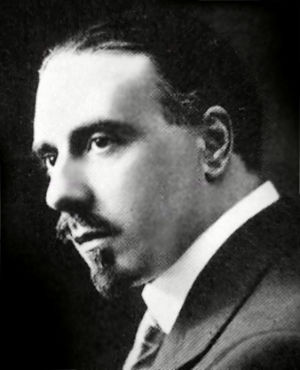
Born in 1879 and educated at Rossall School in Lancashire and Wadham College, Oxford, Thomas Beecham had no formal education as a conductor but, thanks to his family’s wealth, formed an amateur orchestra at the age of 20, and followed it seven years later with the New Symphony Orchestra, which performed at the Queen’s Hall in London. He replaced this a couple of years later with the Beecham Symphony Orchestra. A keen champion of new music, including that of Delius and Richard Strauss, he began putting on operas in 1909, and was responsible for bringing Sergei Diaghilev’s celebrated Ballet Russes to London. Schonberg describes Beecham as “sophisticated, cultured, irrepressible, urbane, witty on a Shavian level (Shaw himself once said about him, with some amazement, ‘Beecham is the most adult conductor I have ever met’)” but “with manners abrupt (and, often, bad) as can be expected of a titled millionaire.”[27] He was knighted for his services to music in 1916.
The story of his bringing The Magic Flute to Drury Lane begins in September 1913, when he conducted Mozart’s opera for performances by the Denhof Opera Company in Birmingham and Manchester. After two weeks, the company’s impresario, Ernst Denhof, suffered more than £4,000 in losses, and Beecham took it over. He later formed his own Beecham Opera Company using many of the Denhof Company’s members.
A few months later, in February 1914, Beecham published the programme of events for his own upcoming season at Drury Lane. Strauss’s Der Rosenkavalier and Mozart’s Magic Flute would alternate in the first week. By doing this, he was taking something of a risk, as he explains in his autobiography:
“My father [who was providing the money]... enthusiastically backed this imposing scheme, balking only at the idea of reviving The Magic Flute, which he claimed had never been anything better than a mild failure in England for over a century.”
— A Mingled Chime, Sir Thomas Beecham, p. 208
Beecham made some efforts to help the opera go down better with the public. He rearranged some scenes and cut others. He had German violinist and composer Emil Kreuz (1867–1932) turn the spoken passages into sung recitative. He also brought in Russian set designer Vladimir Polunin (1880–1957) (who taught at the Slade School of Fine Art and worked with Diaghilev’s dance company, at one point collaborating with Picasso on set designs) to renovate some existing scenery, and to provide a wholly new drop curtain,[28] whose design (according to a Times review) was intended “to help us to realize the meaning of the mysteries and symbols of the opera”.[29] This drop curtain was, The Times reports, in a notably modernistic style (they called Polunin “a disciple of [Léon] Bakst”), while the renovated scenery, on the other hand, was “all very much according to old-fashioned 19th century conventions”.[30] (You can see a Polunin drop curtain for a 1925 Ballet Russes production at the V&A website here.)
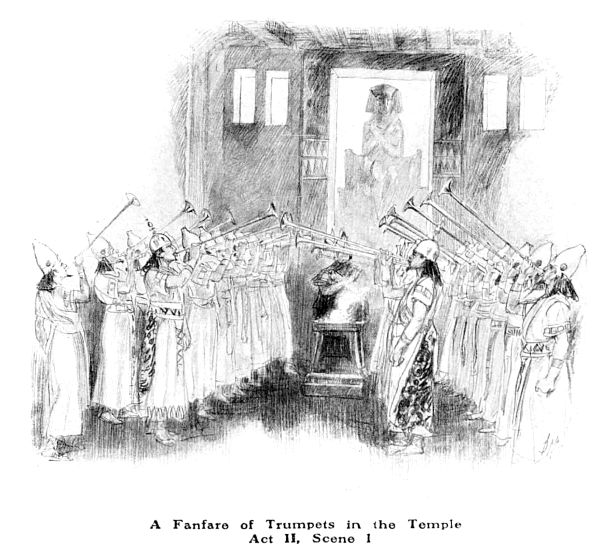
The result was not entirely welcomed as a success, though neither was it dismissed as a failure. Here is the first review from The Illustrated London News:
“In reviving Mozart’s ‘Magic Flute’, Sir Joseph Beecham makes an attempt to interest us in those operatic factors that delighted our grandparents. For a soprano singer to reach a high F is a matter of interest, but there is not necessarily much beauty in scales. The old coloratura singers have gone; musicians do not write for them any longer. An opera must boast a coherent and fairly reasonable story; there is nothing of the kind in Mozart’s ‘Magic Flute’. There is sheer nonsense set to delightful music. Tribute is due to Mr Thomas Beecham for conducting both ‘Der Rosenkavalier’ and ‘Magic Flute’ with very great skill.”
— The Illustrated London News, 30th May 1914, p. 23
A few weeks later their tone had started to shift, though reluctantly:
“At Drury Lane... the success of ‘Der Rosenkavalier’ and ‘Magic Flute’ must be acknowledged. While Mozart’s opera remains a striking example of great gifts misdirected, it will be admitted that the singing of Mlle. Claire Dux in the rôle of Pamina is something that few will be ready to forget. The absurd deep notes of Sarastro, the still more absurd high notes of the Queen of Night (partly transposed for one of the Queens, Mlle. Siems), the extravagances of Monostrato, the general idiocy of Papageno—these things can and will be forgotten long before the opera-lover can forget the exquisite gift and arts of Mlle. Dux. The music, despite the utter lack of continuity... is a thing of beauty, but not operatic beauty. Long training and the habit of thought make criticism of Mozart seem almost treasonable—he has added so much to the joy of life; but one can imagine no more effective fashion of undermining his vogue as a composer of opera than the production at regular intervals of such an opera as ‘The Magic Flute’. At the same time, it is worth remarking that the attendance at the performances of Mozart’s opera was remarkably good...”
— The Illustrated London News, 6th June 1914, p. 36
A week later it shifted further:
“The brilliant singing of Mme. Freida Hempel has been one of the features of the Beecham opera season at Drury Lane. She has been especially successful in Strauss’s ‘Der Rosenkavalier’ and Mozart’s ‘The Magic Flute.’ The music of the latter is extremely difficult to sing, and Mme. Hempel’s part, that of Queen of the Night, ranges over two and a half octaves. She took it with consummate ease. Her voice combines the qualities of a lyric soprano and a coloratura singer.”
— The Illustrated London News, 13th June 1914, p. 38
In 1916 two things happened: Thomas Beecham became Sir Thomas Beecham, and his father died. Thomas, however, did not simply inherit his father’s fortune, he also inherited a complicated contract to buy the Covent Garden Estate (which included five theatres) from the Duke of Bedford. It was a deal that involved millions of pounds, but the inception of the First World War brought in restrictions on the movement of money, and the deal would not be completed for another six years. (It would eventually, at the start of the 1920s, lead to Beecham’s three-year absence from the music scene as he worked to sell enough of his father’s property to cover the resulting debt.)
In the meantime, though, the First World War provided the impetus for Beecham to increase his efforts at bringing opera to the British public, with the added patriotic element of presenting them in English, and with mostly British singers. He put on The Magic Flute again in April, May and June 1916 (this time at the Aldwych Theatre), using a newly-commissioned translation from Samuel Langford (1863–1927),[31] the music critic of The Manchester Guardian. Further performances followed in October, as well as dates in other parts of the country. Then, from May to July and September to November 1917, it returned to Drury Lane, and would do so again in March and June 1918, and March 1919.
This quote (many thanks to Seán Martin for finding this) from Thomas Burke describes the atmosphere of one of Beecham’s Magic Flute performances during the years of the First World War:
One of the oddest experiences in an odd London but one accepted then as part of normal life, was to be sitting in the Aldwych Theatre, during Sir Thomas Beecham’s opera season, listening to ‘The Magic Flute’ or ‘The Marriage of Figaro’, while the barrage crashed and rumbled overhead. This I knew three or four times, and on each occasion not more than a dozen people left the theatre… The entertainers [...] helped to nourish the cheerful spirit of the town. The spirit was there to begin with, of course, but they gave it tone. Sir Thomas Beecham notably deserves credit for preserving to us a little oasis of grace and light in a time when all else was darkness and violence. Those opera seasons of his maintained the balance of many a man who might otherwise have fallen to nervous bitterness and melancholia; and for the larger public there were vaudeville and gay musical shows, which performed a similar service.
— Thomas Burke, London in My Time (1934), p. 120

The Times review of a 1916 performance shows that The Magic Flute may have been a popular success, but was not necessarily a critical one — not, this time, for being a dated reminder of the musical tastes of generations past, but of insufficiently engaging with the modernistic present:
“One would like, of course, to have the production of the Magic Flute put into the hands of some imaginative artist who, as M. Polunin has done with Otello, could turn it into a series of beautiful and consistent pictures. It would be nice to be rid of the comic snake... One does not want the Queen of Night to remind one of a Zeppelin being located by searchlight, nor surely are striped bathing-dresses the most appropriate costumes for the three spirits...”
— The Times, 15th June 1916, p. 11
One scene, though, is several times singled out for praise by even the more critical reviewers. A 1916 piece in The Era notes “we have never heard the beautiful march which preludes the second act to greater advantage”, [32] while a Times review from 1919, mentioning the “faded old scenes which look as though they had been bought cheap from a third-rate travelling show”, contrasts these with “a dignified scene in the Temple [that] gives just a suggestion of what might be done with the whole”.[33] An earlier Times review also mentions “the scenes in the temple, especially that which opens the second act”, as having “all the feelings of earnest intention which they should have.”[34]
This is the “Temple scene” David Lindsay refers to. It begins with an instrumental “March of the Priests”, a second-act opening that was, along with the Overture, one of the last things Mozart composed for the opera following his return from Prague. After this solemn entry onto the stage, Sarastro announces the start of Tamino’s initiatory trials, the attempt to “rend his veil of darkness and penetrate the realms of light”.[35] The gathered priests ask the ritual questions — “Is he virtuous? Can he be silent? Is he beneficent?”[36] — after which Sarastro sings a prayer to Isis and Osiris to aid the young man in his trials.
It is, despite some critics’ dismissal of The Magic Flute as nothing but an “unending succession of happy moments”,[37] “as inconsequent as it is beautiful”,[38] the beginning of a second half that, though it still contains the comic moments and thrills of the first half, moves steadily towards a profound sense of the power of reason and ritual to bring order — cosmos as opposed to chaos — to both the human soul and civilisation as a whole, and just the sort of rational enlightenment the Age of Enlightenment believed in.
Although The Magic Flute was put on at Drury Lane throughout several opera seasons in 1917, 1918 and 1919, it was always part of the same basic production (often featuring the same singers from year to year — see the Appendix below). It’s evidently one of these that David Lindsay (perhaps with his wife Jacqueline, as they married in 1916) saw and was so struck by — to the extent of referring to this same “Temple scene” three times (that Masonically-significant number again) in the first chapter of his first novel.
So what relation does The Magic Flute have to A Voyage to Arcturus?
The Magic Flute and A Voyage to Arcturus
There are some obvious, broad-stroke similarities between Mozart’s 1791 opera and David Lindsay’s 1920 novel.
Both, for instance, take what was at the time a “low” cultural form (Singspiele/Zauberoper on the one hand, interplanetary science fiction on the other) and use it to explore serious ideas about human life. In both, the hero (Tamino, Maskull) encounters a powerful supernatural being (the Queen of Night, “Surtur” on the Lusion Plain), who recruits them in their conflict against another being they describe as evil (Sarastro, Krag), only for the hero to learn that the supposedly “evil” entity in fact represents a higher good. Both, then, depict a process of profound change in their protagonist’s outlook, a moment of reevaluation and revelation that flips their entire sense of the nature of reality.
In both, the main character passes through various trials or encounters as part of an initiation (explicitly ritualistic for Tamino, more extempore but ultimately just as targeted for Maskull) leading to their entering a new level of existence, as symbolised by a realm of light (the Temples in The Magic Flute, Muspel in Arcturus).
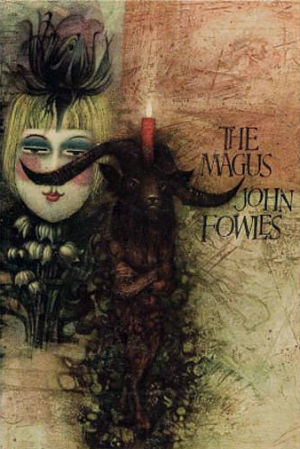
Artwork by Tom Adams
Such initiatory trials can’t, of course, be taken as evidence of the particular influence of The Magic Flute on Lindsay’s novel, as they are archetypal, and occur in many stories. The Magic Flute, for instance, has a lot of striking parallels with Shakespeare’s The Tempest, which has a similar “initiatory” story strand, in which the sorcerer Prospero tests Ferdinand and Miranda before allowing them to marry, just as Sarastro does with Tamino and Pamina. There are other dramatic echoes between the two, such as the way the brutish Monostatos in The Magic Flute, though a servant of Sarastro, lusts after Pamina, and later recruits the Queen of Night and her allies to try and usurp his former master, just as Caliban in The Tempest, though a servant of Prospero, has lusted after Miranda, and tries to recruit Trinculo and Stephano to usurp his master. Other initiatory tales where a priest or mage figure puts a young man or woman through a series of tests can be found in The Magus by John Fowles, the “Valerie” section of Alan Moore and David Lloyd’s V for Vendetta, and the anonymous medieval poem Sir Gawain and the Green Knight, to name but three. All are about their protagonist being guided (or forced) to connect with a deeper understanding of life by being put through often quite harsh trials.
Another curious parallel between the two works is the importance of the number three. I’ve already mentioned the Masonic significance of the number three, and how it can be found throughout the music, dialogue, dramatis personae, and plot of The Magic Flute. A Voyage to Arcturus, despite being about an essentially dualistic reality (in which you’d expect a prevalence of twos), is interwoven with threes at just as many levels. At several points, characters on Tormance explain their worldview as being made up of three elements (Hator’s Trifork, Earthrid’s theory of music, Corpang’s three “worlds” of existence, relation, and feeling, and his equivalent Three Gods); characters are constantly occurring in threes (Maskull, Nightspore, Krag; Maskull, Joiwind, Panawe; Maskull, Oceaxe, Crimtyphon; Maskull, Oceaxe, Tydomin; Maskull, Tydomin, Spadevil; Maskull, Polecrab, Gleameil; Polecrab’s three sons; Maskull, Gleameil, Earthrid; and so on, until we have Maskull, Gangnet, Krag); the colours of Tormance are created by two interlocking threes (blue, yellow, red; blue, ulfire, jale); there are three sources of light on Tormance (Branchspell, Alppain, Muspel), and three worlds the story moves through (Earth, Tormance, Muspel). Three pops up constantly in subtler ways, too, such as the fact that Starkness Observatory is made up of three buildings (the house, the workshop, the tower), or that the wise Broodviol is trilateral (having three arms, three legs, three pairs of eyes). Maskull gains three new types of sense-organ on arriving on Tormance. To Gangnet’s two forms of creative action (“One may either build up, or destroy”), Krag adds a telling third (“One may steal”). Threes run through Lindsay’s very use of language, with his constantly describing people and things with lists of three adjectives (“dark, solid, and manlike”, “sagacity, brutality, and humour”, “fresh, nervous, and girlish”, “hard, persistent, and melancholy”, “hot, parched, and tormented”). These adjectival trios occur over 100 times in the novel, a surely deliberate aesthetic decision on Lindsay’s part, as his later novels have far fewer instances of this pattern (fewer than 30 occur in The Haunted Woman, and less than 60 in the much longer Devil’s Tor, for instance).
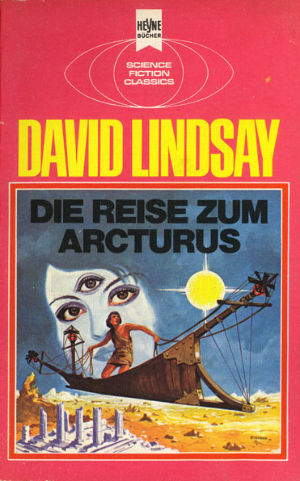
Three eyes, and a temple...
Art by Karl Stephan
This raises the inevitable question, was David Lindsay a Freemason? His uncle, Henry Edward Bolton Joyce (1833–1907), editor of The Shipping Gazette and Lloyd’s List (and the man who might well have been the family contact who got young David his job with Price Forbes after the disappearance of his father), was a Freemason, being mentioned a number of times in contemporary masonic periodicals.[39] Many of these mentions are as part of attendance lists at lodge meetings, which leads me to conclude that, if David Lindsay had been a mason, he would also have been mentioned at some point, simply for attending. As it is, neither David nor any of his other male relatives (such as his other uncle, Theodore Couchman, who one might expect Henry Joyce to bring into Freemasonry, as the pair of them worked at the same firm) appears in these lists, leading me to conclude Lindsay wasn’t a Freemason.
And anyway, the significance of the number three in A Voyage to Arcturus is more profound than any merely artificial scheme of symbolism. The way Lindsay describes so many things in terms of three qualities, as though he were linguistically triangulating them, and the way so many of his Tormantic characters have formed philosophies around trios of qualities, makes me think that three, for him, in this novel, was the number of physical reality. Three is the “waltzing rhythm” by which souls are danced away from the direct path to Muspel. Three could also be seen as a way of escaping dualities, by presenting a third alternative or a new synthesis. Broodviol’s wisdom is somehow represented by his trilateral structure, just as insight in general is symbolised by having a third eye, which Maskull gains in several forms. There’s a constant need, throughout the book, to find resolutions to seemingly fixed dualities (such as the young Panawe’s prevaricating between being male or female) by finding a third state (Haunte calls Maskull a “man-woman”, of a mixed nature, and this perhaps is what enables him to survive meeting Sullenbode). The prevalence of threes in Lindsay’s novel is worth an article on its own, but, for now, is worth noting as an interesting parallel with The Magic Flute.
But while The Magic Flute and A Voyage to Arcturus share similarities on these two levels (the macro, broad-stroke similarities of plot, and micro, that shared aesthetic DNA built upon the number three) there are almost no convincing similarities on the middle level, with explicit echoes of particular characters or scenes.
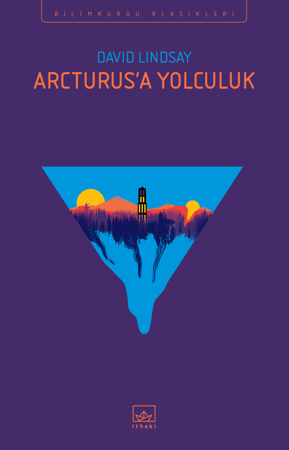
Three sources of light (Branchspell, Alppain, Muspel)
in a triangle...
One might find an echo between the scene where a helpless Maskull is tended to by Joiwind on his arrival on Tormance, and the unconscious Tamino’s being revived by the Three Ladies, as both occur at the start of their protagonist’s journey. The time-mirage of a temple Maskull and Joiwind encounter in their journey together might be an echo of The Magic Flute and its “Temple scene”, an imaginative promise of Tormantic initiation rituals yet to be formed. The most closely paralleled scene, for me, is where Maskull is confronted by a being calling itself Surtur on the Lusion Plain — whose appearance is preceded by a trumpet-like musical note — but whom he later realises must have been the deceptive Crystalman. This could be a parallel with the scene in The Magic Flute where the Queen of Night recruits Tamino onto her side, by having him agree to rescue her daughter from Sarastro, only for him later to learn that Sarastro is a benevolent and wise man, and not at all as the Queen makes him out to be.
None of these scenes would stand as convincing parallels on their own. When it comes down to it, the most explicit link between A Voyage to Arcturus and The Magic Flute is Lindsay’s mentioning the opera by name in the first chapter. My feeling is that Lindsay, attending The Magic Flute at Drury Lane, may have felt enthused by the power of his reaction to it, perhaps making him want to create something similar: a mix of fantastic spectacle and philosophical enquiry, an initiatory journey from darkness to light, a quest for truth that hinges on a philosophical about-turn. Even if he consciously set out to create a work inspired by The Magic Flute, his own ideas soon took over too much for any more than a broad-stroke influence to remain. (Hence the fact that the few scenes I can find that even lightly echo The Magic Flute all occur in the early chapters of Maskull’s journey on Tormance.) I like to imagine Lindsay watching The Magic Flute, having his sense of the sublime stirred by the solemnity of “Temple scene”, and thinking, “Now, what would such an opera, but with a libretto by Schopenhauer, and music by Beethoven, be like!”
And perhaps that’s what he set out to write in A Voyage to Arcturus.
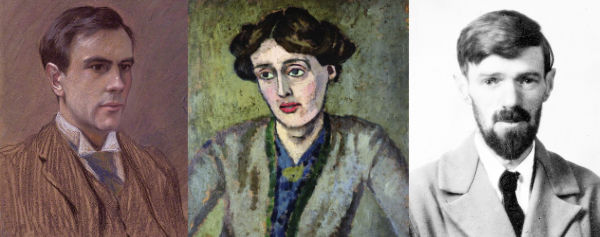
The Magic Flute and the Modernists
This isn’t to dismiss or devalue the possible influence of The Magic Flute on Lindsay’s novel. Providing the initial impetus for a creative endeavour is perhaps the most important influence there is. And it turns out that the Drury Lane performances of The Magic Flute had a similar impact on several other writers at the time, meaning that, whatever its effect on the writer of A Voyage to Arcturus, it was not a lone occurrence, but part of a wider (if select) cultural impact.
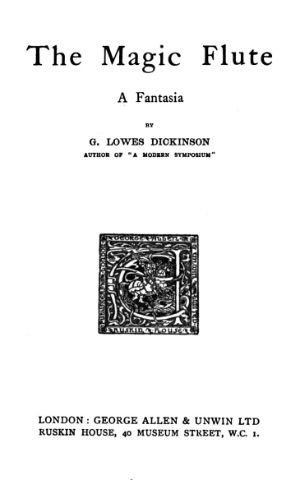
In the same year as Lindsay’s Arcturus came out, the writer, political scientist, and philosopher Goldsworthy Lowes Dickinson (1862–1932) published The Magic Flute: A Fantasia. A 127-page novella, it relates Dickinson’s own version of Mozart and Schikaneder’s story, using the same characters and basic situation, but with some variations (Pamina is revealed to be Sarastro’s daughter; Tamino gets the magic flute not from the Queen of Night but inherits it from an ancestor, who in turn got it from Sarastro), leading to an ultimately anti-war theme.
We know Dickinson saw the Drury Lane production of The Magic Flute because another writer and friend of his saw it while sitting in the same row of seats. This was Virginia Woolf, who attended performances of The Magic Flute in June 1916, then again in 1918 (and once more in 1925).[40] She not only met Dickinson on the night of one of those Drury Lane performances, but saw a lot of him while he was writing his Fantasia, as both were part of the Bloomsbury circle. At this time, Woolf was writing her 1919 novel Night and Day, whose plot the critic Jane Marcus has pointed out is shaped “around the initiation, quest, and journey myths of The Magic Flute.”[41] In that novel, Marcus argues, Woolf rewrote the opera as the feminist initiation of its principal female characters, reversing The Magic Flute’s implied misogyny (the Queen of Night as the source of all discord and evil), and replacing the banishment of the Queen’s irrationality with a less patriarchal forgiveness and acceptance.
A third writer, D H Lawrence, saw The Magic Flute at Drury Lane in November 1917, along with his wife Freida.[42] This was around the time he conceived of and (in 1918) began work on, his novel Aaron’s Rod (which was eventually published in 1922), whose main character is a flute player. Susan Reid, editor of The Journal of D H Lawrence Studies, has looked at the influence of Mozart’s opera on this novel, including the idea that:
“Aaron’s journey is in part a trial of silence, such as Tamino undergoes in the Magic Flute, as he struggles to find new modes of understanding the world.”
— Susan Reid, “‘The Insidious Mastery of Song’: D. H. Lawrence, Music and Modernism” in Lawrence, Music and Modernism, p. 124–5
David Lindsay’s being inspired — to whatever degree — by the Drury Lane presentation of Mozart’s The Magic Flute links him with these Modernist writers of his own time. The Modernists are often seen as seeking to express the essential de-centredness and chaos of the early 20th century, but perhaps it was through the likes of a work such as The Magic Flute — which, back in the Age of Enlightenment had championed a belief in reason and order, and enacted it through ritually-inspired musical drama — that some of those writers sought to engage with a way of finding new paths out of the moral and philosophical chaos of the interwar years, towards new certainties. Fitting a modern narrative to this Enlightenment-era template was a way, perhaps, of seeking just such a new form of order.
If this is so, then Lindsay’s use of the opera’s basic story is a strikingly different approach. Perhaps one explanation for the lack of any but a broad-strokes influence of The Magic Flute on A Voyage to Arcturus is that its means of dealing with irrationality by simply banishing it into the dark of night was, for Lindsay, insufficient. And perhaps the final remnant of the initiating inspiration of the “Temple scene” in Arcturus is to be found near the end of the novel, with Maskull and Sullenbode on a bare mountainside of the Mornstab Pass, surrounded by what may have been a temple, or the start of one, but is now just enigma and silence:
[Sullenbode:] “What do these pillars seem like to you?”
[Maskull:] “They might be the entrance to some mighty temple. Who can have planted them there?”
She did not answer. They watched Corpang gain the summit of the hill, and disappear through the line of posts. Maskull turned again to Sullenbode.
“Now we two are alone in a lonely world.”
— Lindsay, A Voyage to Arcturus, Chapter 19
Appendix — Casts of the Drury Lane performances
I’ve assembled these cast lists from contemporary reviews, and from later reference works (such as Wearing). I’ve tried to find names for each year, but this doesn’t necessarily mean these performers were the only ones for that year, or that the named singer performed throughout the year. This is more to give an idea of who was performing, not a definitive guide.
| 1914 | 1915 | 1916 | 1917 | 1918 | 1919 | ||
| Tamino | Tenor | Alexander Kirchner | Alexander Kirchner | Maurice D’Oisly | Webster Millar | Maurice D’Oisly | Maurice D’Oisly |
| Pamina | Soprano | Claire Dux | Claire Dux | Miriam Licette | Miriam Licette | Miriam Licette | Agnes Nicholls |
| Papageno | Baritone | Cornelis Bronsgeest | Cornelis Bronsgeest | Frederick Ranalow | Frederick Ranalow | Frederick Ranalow | Frederick Ranalow |
| Papagena | Soprano | Irene Eden | Irene Eden | Olive Townend | Olive Townend | Bessie Tyas | Bessie Tyas |
| The Queen of Night | High soprano | Melitta Heim, Frieda Hempel, Margarethe Siems | Melitta Heim | Sylvia Nelis† | Sylvia Nelis† | Sylvia Nelis† | Sylvia Nelis† |
| Sarastro | Bass | Michael Bohnen | Michael Bohnen | Robert Radford, Foster Richardson | Foster Richardson | Robert Radford | Foster Richardson |
| 1st Lady | Soprano | Clytie Hine | Clytie Hine | Clytie Hine | Clytie Hine | ||
| 2nd Lady | Soprano | Eda Bennie | Eda Bennie | Eda Bennie | |||
| 3rd Lady | Mezzo-soprano | Marion Beeley | Evelyn Arden | Evelyn Arden | |||
| Speaker of the Temple | Bass | Ernst von Pick | Ernst von Pick | Frederic Austin | Albert Chapman | Frederic Austin | Frederic Austin |
| 1st Priest and Armed Man | Tenor | Frederick Blamey | Frederick Blamey | Frederick Blamey | Kenneth Sterne | ||
| 2nd Priest and Armed Man | Bass | Harry Reynolds | Harry Reynolds | Foster Richardson, Thomas Creegan | E Gilding-Clarke | ||
| Monostatos | Tenor | Hans Bechstein | Hans Bechstein | Alfred Heather | Alfred Heather | Alfred Heather | |
| 1st Genie | Soprano | Leonora Sparkes | Doris Lemon | Doris Lemon | |||
| 2nd Genie | Mezzo-soprano | Lena Maitland | Lena Maitland | Elsie Wynn | |||
| 3rd Genie | Contralto | Edith Clegg | Ethel Toms | Ethel Toms |
(†: Sylvia Nelis, under the name Victoria Hopper, sung in the Cambridge 1911 production of The Magic Flute.)

Bibliography
- Beecham, Thomas — A Mingled Chime: An Autobiography (Putnam’s, 1943)
- Collins, Sarah — “The elision of difference, newness and participation: Edward J Dent’s cosmopolitan ethics of opera performance”, in Music History and Cosmopolitanism edited by Anastasia Belina, Kaarina Kilpiö, Derek B. Scott (Routledge, 2019, ebook)
- Dent, Edward Joseph — Mozart’s Operas (Chatto & Windus 1913)
- Fyfe, Dominic — “Beecham in Berlin: The Recording of Die Zauberflöte” (Nimbus Records, 1991), CD Booklet for Mozart, Die Zauberflöte, Sir Thomas Beecham Berlin 1937.
- Keefe, Simon P — Mozart in Vienna: The Final Decade (Cambridge University Press, 2017)
- Lindsay, David — A Voyage to Arcturus (1920)
- MacFarren, Natalia (translation and introduction) — Die Zauberflöte: Novello’s Edition (Novello, Ewer & Co., 1874)
- Marcus, Jane — “Enchanted Organs, Magic Bells: Night and Day as Comic Opera”, in Virginia Woolf: Revaluation and Continuity, a Collection of Essays, ed. Ralph Freedman (University of California Press 1980)
- Nettl, Paul — Mozart and Masonry (Philosophical Library, 1957)
- Pick, J B — “A sketch of Lindsay’s Life as Man and Writer”, in The Strange Genius of David Lindsay (John Baker, 1970)
- Polunin, Vladimir — The Continental Method of Scene Painting (Beaumont, 1927)
- Schonberg, Harold C — The Great Conductors (Simon and Schuster, 1967)
- Sutton, Emma — Virginia Woolf and Classical Music (Edinburgh University Press, 2013)
- Vernon, Roland — “The Magic Flute” (Nimbus Records, 1991), CD Booklet for Mozart, Die Zauberflöte, Sir Thomas Beecham Berlin 1937.
- Wearing, J P — The London Stage 1910-1919: A Calendar of Productions, Performers, and Personnel (Scarecrow Press 2013)
- Zaslaw, Neal, and Cowdery, William (editors) — The Compleat Mozart: A Guide to the Musical Works of Wolfgang Amadeus Mozart (W W Norton, 1991)
Footnotes
- 1^ — A Voyage to Arcturus, Chapter 1
- 2^ — Keefe, p. 547
- 3^ — Nettl, p. 68
- 4^ — MacFarren, p. 27
- 5^ — Vernon, p. 2
- 6^ — Wikipedia: Wenzel Muller
- 7^ — Vernon, p. 4
- 8^ — Masonic Dictionary.com, The Three Lesser Lights, by Brother William H. Taylor
- 9^ — Zaslaw etc. p. 66
- 10^ — MacFarren, p. iv
- 11^ — Grove’s Dictionary of Music and Musicians, Macmillan 1907, Volume 3, p. 310
- 12^ — “Volksstück”, The Oxford Companion to German Literature, ed. Henry and Mary Garland, OUP, online version, 2005
- 13^ — Quoted by Collins
- 14^ — The Spectator, No. 670, May 1st 1841, p. 420
- 15^ — The Spectator, No. 670, 1st May 1841, p. 420
- 16^ — The Era, 25th October 1916, p. 10
- 17^ — Dent, p. 335
- 18^ — The Times, 17th April 1916, p. 11
- 19^ — E M Forster, Goldsworthy Lowes Dickinson and Related Writings, vol. 13, Edward Arnold 1934, p. 219
- 20^ — Fyfe, p. 2
- 21^ — Both from a 1909 play, The Whip. See Theatrecrafts.com, “The Whip”
- 22^ — Collins
- 23^ — Quoted in Collins
- 24^ — Radio Times, 18 March 1927, p. 575
- 25^ — George Bernard Shaw, quoted in English National Opera Guides: The Magic Flute, p. 45
- 26^ — Schonberg, p. 289
- 27^ — Schonberg, p. 289
- 28^ — Polunin, p. 32
- 29^ — The Times, 22 May 1914, p. 10
- 30^ — The Times, 22 May 1914, p. 10
- 31^ — Wearing, entry 16.72
- 32^ — The Era, 25th October 1916, p. 13
- 33^ — The Times, 26th March 1919
- 34^ — The Times, 22nd May, 1914
- 35^ — MacFarren, p. 83
- 36^ — MacFarren, p. 83
- 37^ — The Times, 7th June 1918
- 38^ — The Times, 17th April 1916, p. 11
- 39^ — See Masonic Periodicals Online, and Ancestry.co.uk
- 40^ — Sutton
- 41^ — Marcus, p. 97
- 42^ — The Life of D. H. Lawrence: A Critical Biography by Andrew Harrison, John Wiley & Sons 2016, p. 168

